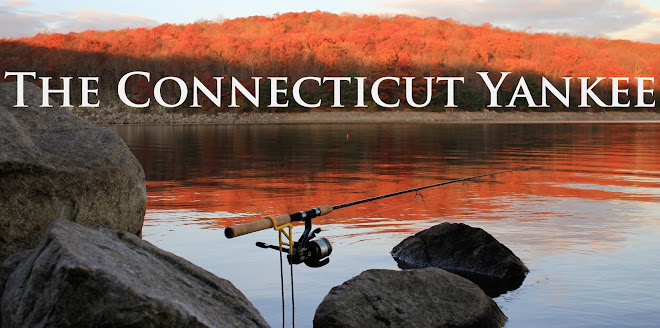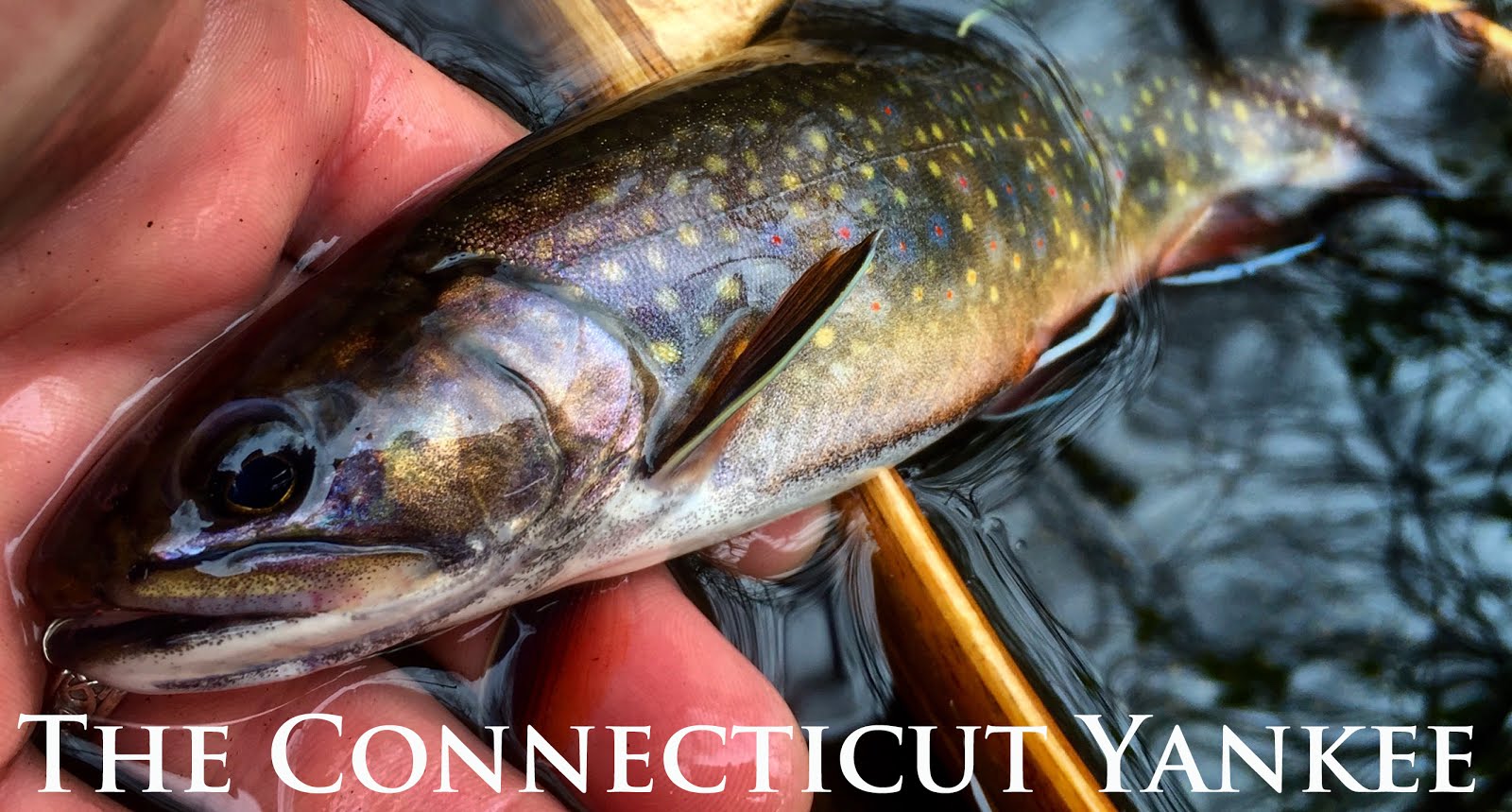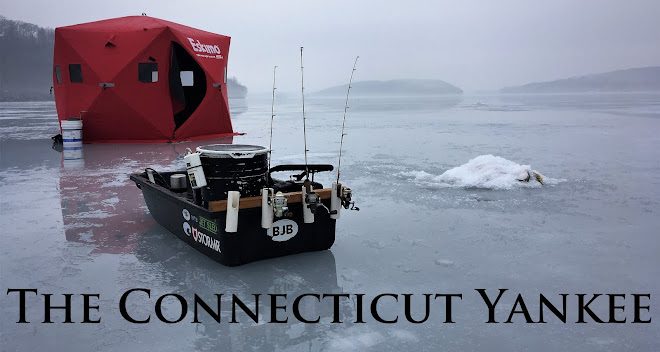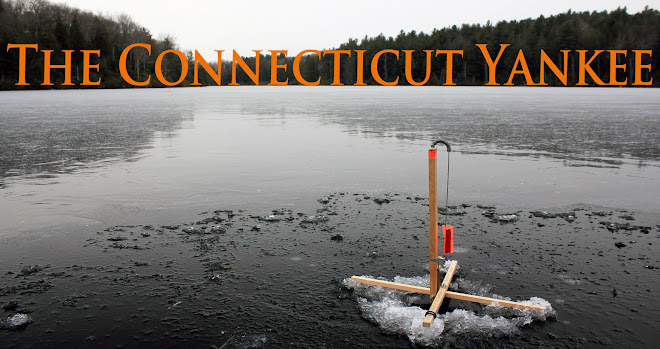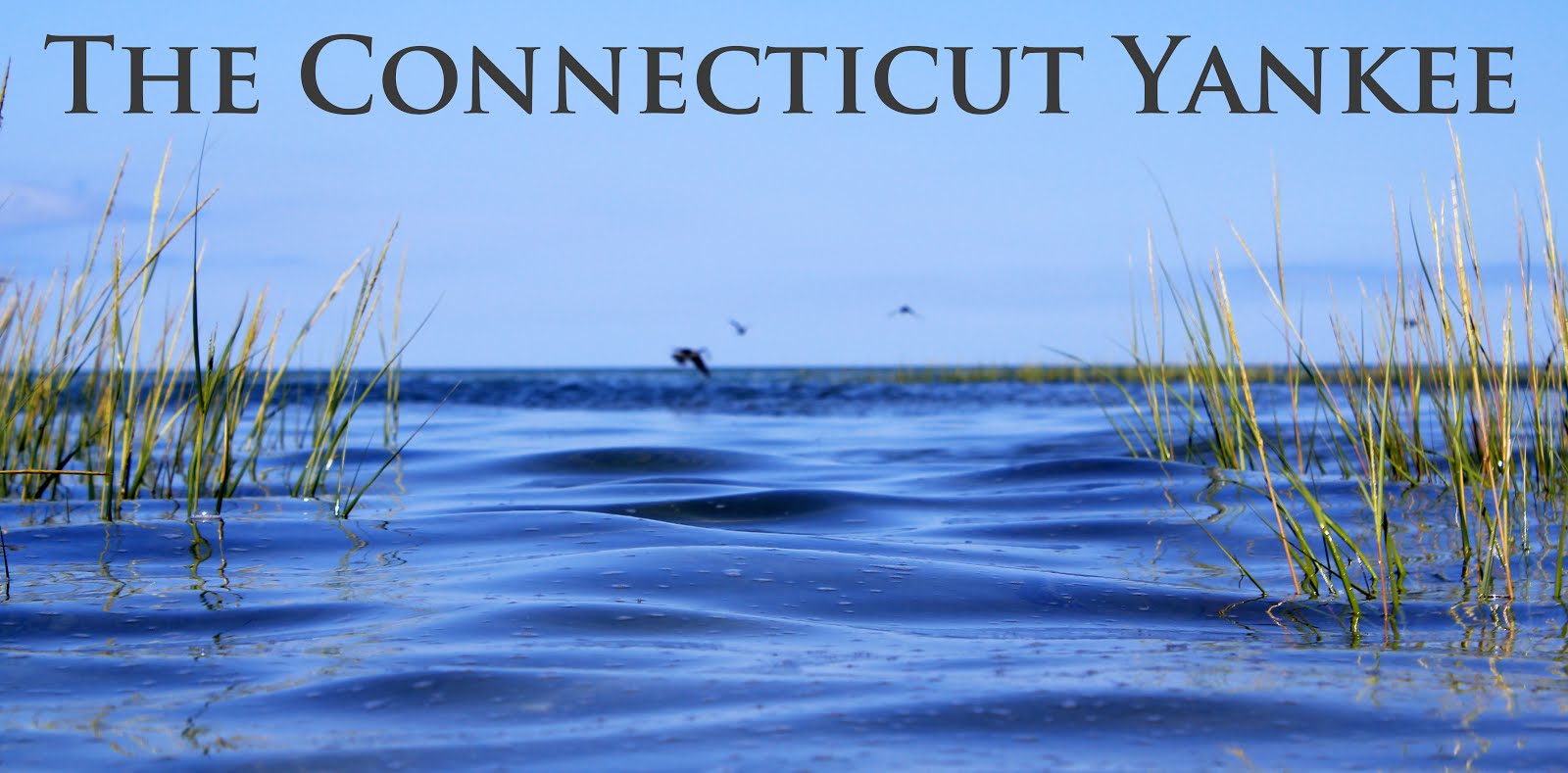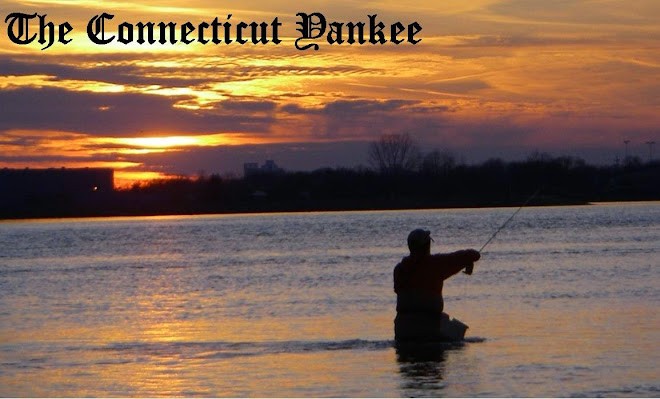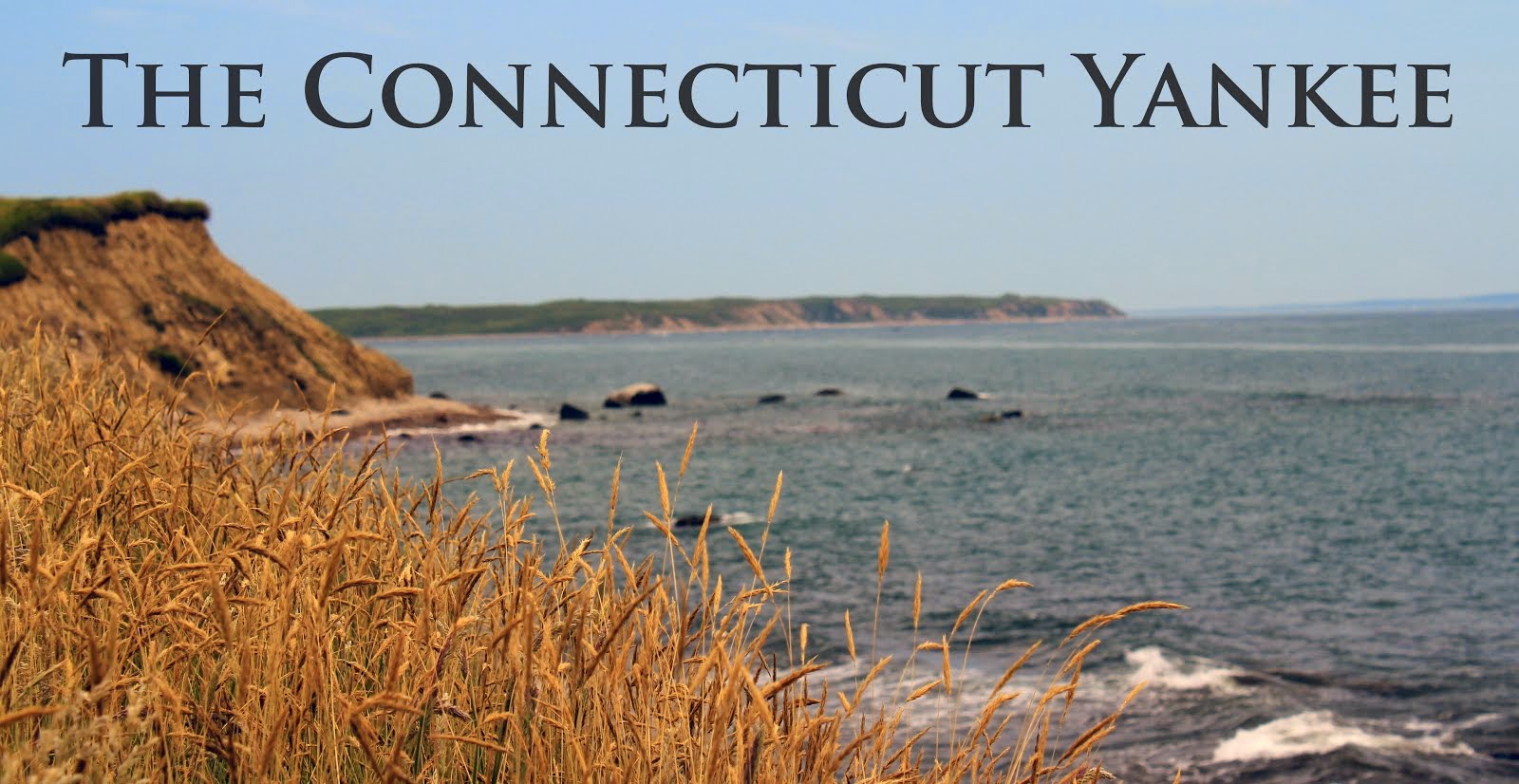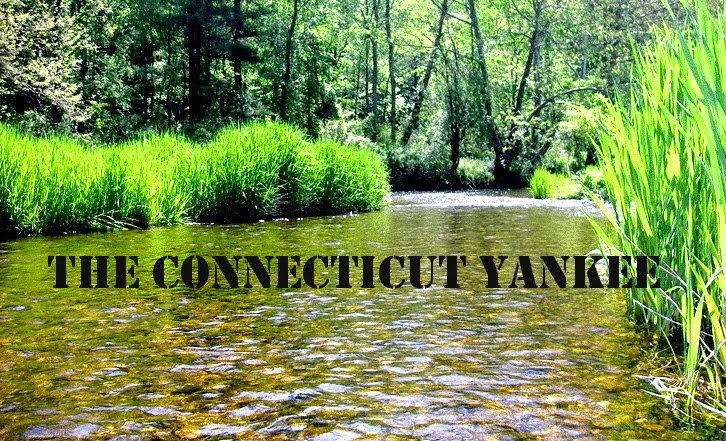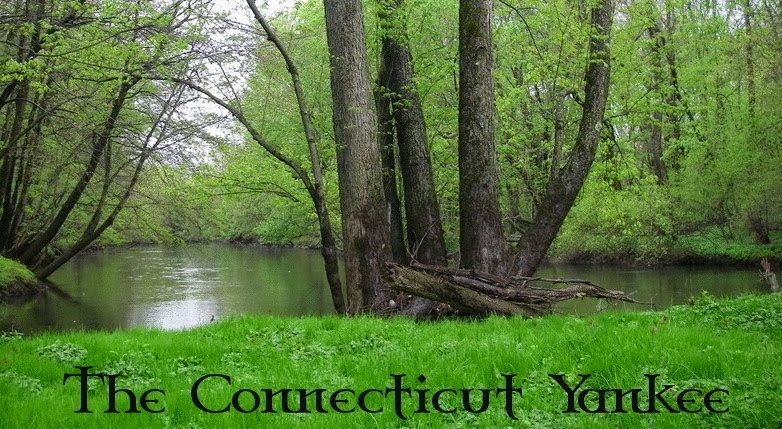Lake trout are revered as one of the premier freshwater game-fish of North America. For many anglers, there isn't a better time of year to target them than in the thick of winter. Unlike many sweetwater species, lakers, or togue, as they are sometimes referred to, are more active in the colder months, which makes them excellent quarry for ice fishermen. Although a lake trout fishery does not exist here in Connecticut, they thrive in several deep, cold lakes of New England, one of which we traveled to last weekend.
The annual lake trout derby on Maine's Sebago Lake is something that I look forward to each winter. This tournament can take on a real circus atmosphere, yet I pencil it in every year and the trip's crew continues to grow. I'm not a big fan of fishing tournaments, but I make an exception for the Sebago derby. The big water experience is something I can't get on my home waters and there is a chance to stick a trophy fish with every drop of your jig. The $65,000 in prizes doesn’t hurt either.
Good friends, who have long since moved to Maine from Connecticut, have hosted me since my first derby years ago. It wasn't long before I introduced my uncle to the scene on Maine's second largest lake. To round out the crew this year, two more die-hard fishing buddies signed-on. We headed north Friday morning in a truck spilling out with gear, only to binge at four more shops along the way, including the staple stop at New Hampshire's duty-free liquor warehouse.

For weeks leading up to the tournament, I monitored Sebago's ice conditions and weather forecasts via internet forums and telephone calls. The sad reality was that most of the lake was ice free, including each location I had ice fished in past derbies. Sebago's monstrous Big Bay had skimmed over a few times this winter, but each time wind and even rain ruined her chances of locking up for good. Where there was ice, it was quickly becoming questionable and thousands of anglers on ATV's, snow-mobiles, and on foot would soon be risking their lives for fish. This same ice scenario played out a few years ago and tournament officials decided to play it safe and open the derby statewide. However, this year, for reasons I cannot explain, the powers at be decided to go on with the Sebago tournament as planned, even with her sketchy ice conditions and miles-long pressure ridges.
Upon arriving to the shores of Sebago Friday afternoon, we used fading daylight to scout potential fishing locations for the following two days, or so we thought. As luck would have it, we talked to the right gentleman in a parking lot overlooking Sebago's Lower Bay, which was already dotted with dozens of ice shacks, and would undoubtedly be a zoo in the morning. This Good Samaritan put our group of four out-of-towners on two remote access points; spots we would never have stumbled upon on our own. Each area was clearly posted "private", but with most of the lake unfishable, we decided to take our chances to get away from the masses.

We headed back to the weekend headquarters in Steep Falls, where we tweaked gear, ate like kings, and swapped stories around the woodstove, while sipping choice beverages. Morning came fast and we let the sun rise before setting out, mostly for safety purposes, as no one wanted to cross the pressure cracks for the first time at dark-thirty. With help from a bathymetric map, we found suitable depth changes diagonally off a fishy-looking point. The Nils power auger made short work of the ice and before long over one hundred 8-inch holes were punched in the vicinity. We set up traps with dead baits right on bottom, in depths ranging from 50 to 90 feet of water.
Our group soon got to jigging. All the tried-and-true laker jigs that we had heard or read about made an appearance, from tube jigs stuffed with sucker meat to Airplane jigs tipped with fish fillets.We did manage to mark some targets and even got a few to chase, but they lacked any real commitment and the fish seemed to be glued to the bottom.
The one and only flag of the entire day tripped mid-morning in about 70 feet of water. It was one of Derrick’s traps and he had to make a 150-yard dash from a solo jigging mission. There was a healthy amount of line taken out and when he finally caught up, it was taught and off to the side – a great sign. A solid hook set was made and it was game on. After a few minutes and some nice runs, flashes began to show through the hole. Aaron readied the gaff and gently pulled the trout from water. Derrick’s first lake trout was on the ice and our group was on the board. The fish weighed in at 6.4 lbs. and held first place for much of the day.


All the while we jigged, cooked and relaxed, the ice was melting from underneath us. For Maine, in February, it was a beach day. The predicted winds for Saturday were thankfully off the mark and the mercury reached the mid-forties. I don’t think anyone anticipated how quickly the “safe” ice would deteriorate. The pressure ridges grew wider and wetter with each pass from the ATVs and snow machines. The ice began to turn noticeably soft too and the Nils took less and less time to drill through it. We heard air boats humming around the lake, but little did we know that they were being used by Maine game wardens to ferry off anglers trapped on sketchy ice. I had the utmost confidence that the crew I had invited brought the tools, knowledge and experience to get home safely, but that cannot be said for everyone that walked on the lake that day.
After a tough day of fishing, and a long walk back to the truck, we were greeted in the lot by two game wardens who notified us that second day of the tournament would be canceled due to the now horrible ice conditions. We were told that seven vehicles, eight ATVs, two snow-mobiles, and 18 anglers went in the drink that day, thankfully none of which were hurt seriously.
 |
Photo credit: Aaron Swanson
|
We were happy to be on terra firma, but extremely bummed that our chances for another lake trout ended right there in that dirt lot. There were parts of Sebago that could still support anglers, and even snow machines, but it just wasn’t worth the risk. We headed back to home base and recapped the day over a Thanksgiving-style meal. Another night full of laughs and stories commenced and we plotted a backup plan for the morning. A classic lake with a brown trout and alewife combination was chosen, as the other quality lake trout destinations were too far of a drive. We came to Maine to fish for lake trout and the gear and mentality we brought showed that. Although a very good time, the next day's fishing was anticlimactic. We took our time and we took our skunk standing safely on 16 inches of ice. Each trip is a learning experience and one can never stop learning. Enjoy the video; tight lines.















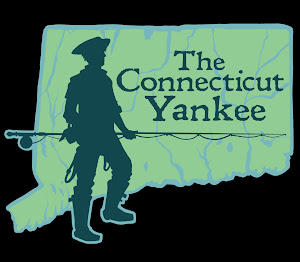









.jpg)

